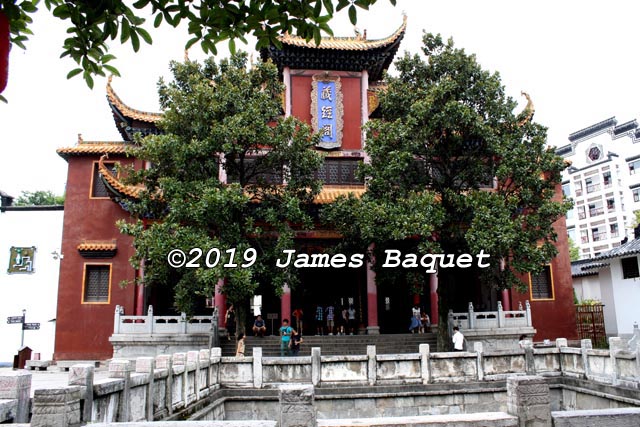(This article was published in the Shenzhen Daily on May 16, 2016.)
 |
| The Dharma Hall and Sutra Repository at Guiyuan Temple, Wuhan |
In most smaller temples, the building behind the main hall is given over to learning. Specifically, it contains an area for preaching in the downstairs, called the "Dharma Hall," and a library of sutras upstairs.
The Dharma Hall will often be nearly empty, except perhaps for a single statue of the Buddha centered on the wall opposite the door, near where the preacher would usually sit or stand. Often this is a jade figure of the historic Buddha, but it may also be an esoteric Buddha such as Vairochana (Piluzhena), the Great Sun Buddha. He can be recognized by his characteristic gesture: hands clasped, one index finger pointing to the other.
"Dharma" is a word with many meanings. In Buddhism it specifically refers to the teaching of the Buddha. It is one of the "Triple Gems" of the Buddha, the Dharma, and the Sangha (Fo Fa Seng): that is, the Buddha, his teaching, and the body of monks and nuns that sustain the teaching.
The specific Dharma being taught may vary by school (Chan/Zen, Pure Land, etc.) or even by dedication to a particular sutra.
And that takes us upstairs, to the Sutra Repository. A sutra is a Buddhist scripture, and there are hundreds if not thousands of them, but the most important ones in the Mahayana tradition (the form of Buddhism found in most parts of China) number between 10 and 20.
The library will often contain scrolls or bound books of great antiquity, and will sometimes have special items on display. Especially popular in some regions are sutras written in the past by monks using their own blood!

No comments:
Post a Comment